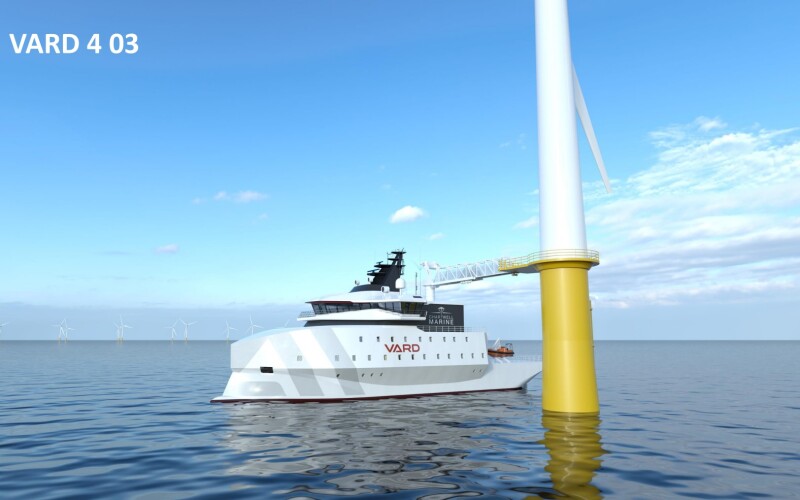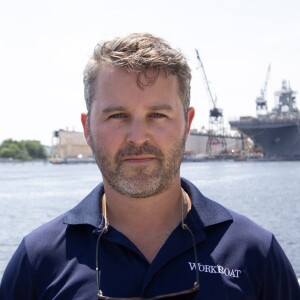UK-based naval architect Chartwell Marine Ltd. and Vard have unveiled a new ship design for the offshore wind market — the 180'x52.5'x14.8' Midi-SOV. The vessel is designed to address the gap between current crew transfer vessels (CTVs) and larger service operation vessels (SOVs).
The Midi-SOV concept was developed by Chartwell Marine in response to the demand for larger CTVs servicing bigger turbine installations farther from shore. The vessel is designed to be Jones Act compliant and ready for construction in U.S. shipyards. The SOV is set to debut in U.S. and European markets in 2024.
Karl Randle, principal naval architect at Vard, spoke to the unanswered questions that began the partnership.
“How could we find a vessel that’s in the middle, hat hits the perfect price point but also gives the technicians a more comfortable, habitable place to work, rest, and then do safe operation so they can be more efficient without needing to do transits every day?” asked Karl Randle, principal naval architect at Vard.
With onboard comfort in mind, the design features a low waterplane area above the waterline to minimize roll motion. Walk-to-work capabilities, previously challenging for smaller SOV hull forms, have also been expanded. The vessel includes 36 single cabins for offshore wind personnel and 20 cabins for the ship’s crew, along with facilities like a gym, auditorium, meeting rooms, and day rooms.
Andy Page, director at Chartwell Marine, highlighted the high costs associated with U.S. offshore wind projects, especially in deep ocean areas on both coasts.
“We don’t have the luxury that we have in Europe of having lots of vessel availability,” he said. “So, we’re going to have to use possibly fewer vessels to do more work. That’s really where the SOV is important, but perhaps the market can’t afford the full scale, and that’s where the Midi finds a perfect place in the market.”
Page discussed the challenges of typical CTV 12-hour passages, noting the time-consuming impact of speed restrictions due to right whale migratory patterns. Through their work with offshore wind developers, Page mentioned developer’s requests for vessels that offer onboard accommodations for extended offshore stays beyond the capabilities of traditional CTVs. This presents a challenge for architects — a lightweight aluminum craft that weighs less than 300 tons is subject to significant challenges in seakeeping and comfort.
The Midi SOV is a displacement form of appropriate proportion and mass, benefiting from a steel structure, more suite for noise mitigation, and increased comfort and insulation. This makes the Midi better suited for longer operating time offshore and a more comfortable environment for people to live in, the designers said.
Addressing the challenge, Randle explained why they decided to partner with Chartwell Marine to take the concept to production design. The Midi-SOV is significantly larger than a CTV, but half the mass of a SOV. “You can fill that gap and get the operability almost of a fully blown SOV,” he said. “You can have containers on the deck. You’ve got a small crane. You’ve got all the key components of an SOV in a slightly smaller form. And there’s no other platform ready to do that today.”
Energy efficiency is a focal point, with the design adaptable to methanol-diesel dual-fuel engines, electric propulsion, and an energy storage system.
“In terms of volume consideration, we’ve been thinking about methanol tanks, the amount of space that takes up compared to diesel tanks,” said Page. “Preparing the vessel for that using electric for both the propulsion unit and coupled to an electric motor, and then take that energy from a generator, or it takes it from a fuel cell or a battery, just depends on the work scheme. The message is that we haven't just designed a diesel boat. We thought very carefully about what future fuels we might need to have provisioned for both with space and technology.”
Tankage includes 50,200 gals. of fuel oil and 211,300 gals. potable water. The Midi-SOV has an expected maximum speed of 12 knots, while service speed will be 10 knots.





